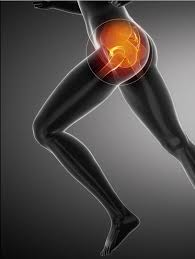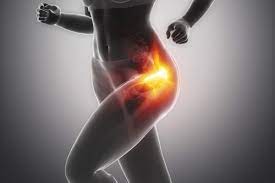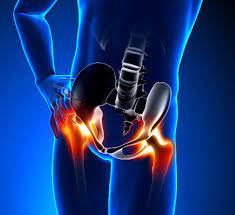

Ever notice how everything in the body seems connected? That is not just a coincidence—it is biomechanics.
One of the most overlooked but powerful examples of this interconnectedness is how neck misalignment can influence hip mobility.
While we often treat the neck and hips as separate regions, the human body works more like a chain than a set of isolated parts.
When one link—like the cervical spine—is misaligned, the whole structure shifts to compensate. This compensation frequently shows up in the hips, affecting flexibility, balance, and even pain levels. It leads to hip joint stress that is unnecessary and unwanted by the body.
This article explores the hidden relationship between neck posture and hip mobility, revealing how cervical misalignment can ripple through the spine and ultimately compromise the function of the hips.
Along the way, we would also look at trending research-backed strategies to reverse this chain reaction.
Article Index
- Forward head posture hip mobility
- Cervical spine misalignment hip pain
- Neck alignment affects pelvic tilt
- Upper cervical misalignment hip issues
- Neck posture and hip flexibility
- Chiropractic neck adjustment hip mobility
- Neck misalignment and hip joint function
- FAQs on Hip Mobility & Text Neck
- Correcting neck posture for hip pain
Forward Head Posture and Hip Mobility
Forward head posture (FHP) is more than just a cosmetic issue—it is a biomechanical disruptor that throws your entire body out of sync.
When the head shifts forward even by an inch from its neutral alignment, the cervical spine experiences an exponential increase in load—up to 10 additional pounds for every inch, as per data often cited in physiotherapy studies.
This unnatural weight distribution places immense stress on postural muscles like the sternocleidomastoid, upper trapezius, and suboccipitals, causing fatigue and tension.
As noted on Physio-Pedia, this forward tilt doesn’t remain isolated—it creates a chain reaction. To counterbalance the head, the thoracic spine rounds (hyperkyphosis) and the lumbar spine may hyperextend.
This disrupts the spine’s S-curve, destabilizing the pelvic base. For instance, someone with prolonged desk posture may unknowingly rotate their pelvis forward, altering hip joint mechanics.
Eventually, this compensatory adaptation interferes with the natural swing and rotation of the hips during walking or running.
Reduced hip range of motion, tight hip flexors, and weakened glutes become common outcomes, contributing to gait abnormalities and lower-body muscular imbalances.
Cervical Spine Misalignment and Hip Pain
Misalignment in the cervical spine often sets off a biomechanical chain reaction that extends far beyond the neck—frequently ending at the hips.
When the head moves forward or the neck loses its natural curve, it alters how weight is distributed across the spinal column.
Research from the National Center for Biotechnology Information confirms that poor cervical posture disrupts normal spinal load distribution, creating excess torque in the lumbar spine and increased tension in the pelvic region.
This imbalance forces the muscles surrounding the hips to work overtime to maintain stability. For example, the iliopsoas and rectus femoris muscles—the primary hip flexors—may become chronically tight to compensate for the shifting center of gravity.
As these muscles shorten, they tug on the pelvis and lumbar spine, which can irritate nearby nerves, particularly the sciatic nerve.
Over time, this cascade of dysfunction may cause persistent hip joint pain, especially during walking, standing, or prolonged sitting.
How Neck Alignment affects Pelvic Tilt?
The pelvis and spine function as a unified biomechanical chain—where a change in one link inevitably impacts the others.
According to Molland Spinal Care, even subtle misalignments in the cervical spine can trigger compensatory shifts all the way down to the pelvis, resulting in either an anterior or posterior pelvic tilt.
This is because the body constantly seeks balance; when the head juts forward or the cervical curve flattens, the thoracic and lumbar spine adjust to redistribute weight, pulling the pelvis along with them.
In an anterior pelvic tilt, often seen in people with prolonged forward head posture and desk jobs, the pelvis tips forward.
This tightens hip flexors like the iliopsoas and stretches out the gluteal muscles, leading to weakened hips and inefficient gait patterns. Picture someone walking with a deep lower back arch and their abdomen pushing forward—this is a classic sign.
On the other hand, a posterior pelvic tilt—commonly found in those with slouched neck and upper back posture—flattens the lumbar curve and limits hip extension. This can shorten hamstrings and limit stride length during walking or running.
Basically, forward neck posture adversely impacts your hips by disturbing the center of gravity.
Over time, these altered pelvic angles directly impair hip mobility, stability, and functional strength, all originating from faulty neck posture.
How Upper Cervical Misalignment causes Hip Issues?
- C1 and C2 Misalignment Disrupts Balance Signals:
- The atlas (C1) and axis (C2) vertebrae play a key role in maintaining head and neck alignment.
- According to upper cervical chiropractic research published in the Journal of Upper Cervical Chiropractic Research, even subtle misalignments in these vertebrae can interfere with proprioception—the body’s internal GPS that governs balance and position awareness.
- Compensatory Shifts Begin at the Shoulders and Spine:
- To compensate for the imbalanced input from the neck, the body instinctively adjusts by rotating the shoulders, curving the thoracic spine, and tilting the pelvis.
- For example, someone with right-sided atlas rotation may unconsciously elevate the right shoulder and hike the right hip to keep the head level.
- Pelvic Tilt and Uneven Hip Tension:
- These adjustments can tighten muscles like the quadratus lumborum or gluteus medius on one side more than the other, leading to pelvic asymmetry.
- Over time, this can cause functional leg length discrepancy, where one leg appears shorter than the other—not due to bone length, but due to pelvic tilt.
- Resulting in Gait Asymmetry:
- This creates an uneven walking pattern, where one hip works harder to stabilize movement, often causing hip pain or sacroiliac joint dysfunction.
By fixing upper cervical alignment, these downstream imbalances often improve.
Neck Posture and Hip Flexibility
According to findings discussed on ScienceDirect, long-term forward neck posture doesn’t just affect the neck and shoulders—it reaches much farther down the chain, thanks to the body’s interconnected fascial system.
Fascia is a web-like connective tissue that wraps around muscles, bones, and organs, creating a continuous structural network from head to toe.
Forward head posture damages the ilium causing unwanted pain and stress on the hip joint.
When the cervical region remains in a forward-leaning position for extended periods, fascial adhesions and muscular tightness begin to form, particularly along the deep front line—a myofascial chain that links the neck, spine, diaphragm, pelvis, and hips.
This tension acts like a pulley system: tight fascia in the neck pulls downward, tugging on thoracolumbar fascia and pelvic stabilizers.
For example, a person with chronic tech neck may develop shortened sternocleidomastoid and scalene muscles, which indirectly restrict tissue mobility all the way to the hip flexors and rotators.
The result is hips that feel “locked up,” stiff, or unable to rotate fully—especially noticeable during squats, lunges, or yoga poses. Movements that require full hip extension or external rotation may feel limited or imbalanced, despite no direct hip injury. It’s a classic case of the neck quietly sabotaging mobility far below.
Chiropractic Neck Adjustment and Hip Mobility
Chiropractic adjustments targeting the neck have shown promising outcomes in restoring hip mobility by addressing the root of postural imbalances.
Clinics such as Krieg Chiropractic report that correcting misalignments in the cervical spine—particularly involving the atlas (C1) and axis (C2)—can help restore the natural curvature of the entire spine.
This realignment reduces the need for compensatory muscle recruitment in the lower back, pelvis, and hips, which often occurs when the body tries to maintain balance with a misaligned neck.
For example, a person with forward head posture may unknowingly tilt their pelvis forward, placing extra strain on the hip flexors and limiting mobility. Once cervical alignment is corrected, the body no longer needs to overcompensate, leading to a more balanced load across the spine and pelvis.
This frees the hip joints to move more fluidly, improving range of motion and reducing discomfort during walking, squatting, or climbing stairs.
While chiropractic care isn’t a universal remedy, an increasing number of case studies and clinical observations support its role in addressing interconnected neck and hip dysfunctions—especially in patients who haven’t responded to isolated hip treatments alone.
Neck Misalignment and Hip Joint Function
Manhattan Physical Therapy outlines how a crooked neck can send shockwaves through your entire kinetic chain—right down to your hips. When the cervical spine veers off course, your body scrambles to compensate, and the result isn’t pretty. Muscles stop firing in the right sequence, and your glutes—the powerhouse stabilizers of your hips—often tap out of the equation. This phenomenon, charmingly nicknamed “gluteal amnesia,” means your backside forgets how to do its job.
With the glutes asleep at the wheel, your body recruits backup: the hamstrings, hip flexors, and even lower back muscles, all of which are ill-equipped for the role of primary stabilizers. The outcome? Strained tissues, uneven load distribution, and a hip joint that grinds under pressure instead of gliding with ease.
Over time, this dysfunction doesn’t just cause tightness—it can reshape joint capsule tension, reduce mobility, and speed up wear-and-tear. In short, a misaligned neck might just be sneakily sabotaging your stride from the top down.
FAQs on Hip Mobility & Text Neck
Q-1: By what chain does a misaligned neck restrict hip motion?
A-1: When the head drifts forward or tilts, the upper back rounds and the rib cage collapses slightly. That shifts the diaphragm upward and the pelvis forward, biasing an anterior pelvic tilt. Hip flexors shorten, glutes lengthen, and the hip capsule sits in a “pre-loaded” position. The result: less comfortable hip extension on one side and reduced internal rotation on the other—often felt as a tug in the front of the hip during lunges or when standing from a chair.
Q-2: Can neck position alter hip rotation even if my low back feels fine?
A-2: Yes. Cervical posture influences where your center of mass sits and how you recruit trunk muscles to stabilize. If the head is forward and the ribs are down, the deep abdominal cylinder under-pressurizes and the pelvis rotates to find stability. That compensation commonly steals a few degrees of hip internal rotation and can make external rotation feel “pinchy,” despite a painless lumbar spine.
Q-3: Why do my hips feel stiffer on days I’m glued to screens?
A-3: Long bouts of forward head posture pair with shallow, upper-chest breathing. The neck and upper chest work more; the diaphragm contributes less. Without good diaphragmatic pressure, the pelvis tips forward to brace, and the hips guard—especially the front and outer hip. You’ll notice tighter hip flexors when you stand, and a reluctance to fully extend the leg behind you while walking.
Q-4: Is there a quick at-home check to see if neck alignment is limiting my hips?
A-4: Try an A/B hip rotation test. Sit tall with knees bent 90°. First, test hip internal rotation (drop one shin outward) and external rotation (drop it inward). Now “stack”: soft chin nod, lengthen the back of the neck, gently lift the sternum without flaring ribs, take two slow exhales. Retest. Many people gain a few degrees instantly, or the end-range feels smoother—evidence that upper-body alignment was capping hip motion.
Q-5: What’s a rapid routine to free the hips by fixing the neck first?
A-5: Use a top-down + local sequence (2–4 minutes):
Neck–rib reset (45–60 s): two gentle chin-nod sets (5 reps) and three slow diaphragmatic breaths with hands around lower ribs.
Thoracic opener (45–60 s): sit back on heels, forearms on a bench, breathe into side ribs while keeping the chin lightly tucked.
Hip mobility (60–90 s): half-kneeling hip-flexor stretch with a glute squeeze, then 5–8 controlled hip CARs (slow circles) per side.
Transfer (30 s): stand and take 10 steps with eyes level, ribs stacked, and easy heel-to-toe roll.
Repeat once mid-day. Most feel easier hip extension during walking and less pinch with rotation within a week.
Correcting Neck Posture for Hip Pain – The Untold Strategy
Improving neck posture is a surprisingly effective, yet often overlooked, strategy for relieving hip pain. It’s not just about reducing stiffness in the cervical spine—it’s about resetting the entire postural chain.
According to resources from BackIntelligence, the first step is to tackle the everyday habits that reinforce poor posture. This includes raising computer monitors to eye level, using voice-to-text features to avoid looking down at phones, and setting reminders to realign your neck during prolonged sitting.
Once these ergonomic foundations are in place, targeted mobility and strengthening exercises come into play.
Cervical isometric holds, deep neck flexor training, and thoracic extension drills help to restore the natural cervical curve and reduce the forward head position. Yoga poses like downward dog and sphinx pose not only stretch the neck and upper back but also influence spinal alignment all the way to the hips.
As alignment improves, the pelvis begins to return to a neutral position, reducing compensatory muscle tension in the glutes and hip flexors. Over time, this enhances hip joint mechanics, improves gait symmetry, and even reduces pressure on the sacroiliac joint—making neck posture correction a powerful but underutilized tool in hip pain recovery.
Conclusion
As per BestForwardHeadPostureFix, “Neck misalignment doesn’t stay confined to your cervical spine—it is a ripple effect that travels from head to hip through a web of fascial lines, muscular chains, and neural pathways”.
When your head leans forward or your neck loses its natural curve, it subtly shifts your body’s center of gravity. This throws the thoracic and lumbar spine into compensation mode, which in turn distorts pelvic alignment and hampers hip function.
The result? Tight hip flexors, underactive glutes, altered gait mechanics, and chronic hip discomfort—all of which can stem from something as seemingly harmless as poor head posture.
Emerging research supports this head-to-hip connection, highlighting the importance of looking beyond localized pain. Instead of chasing temporary relief, addressing cervical alignment can help resolve the underlying mechanics.
From ergonomic upgrades and deep neck flexor training to expert-guided chiropractic or physical therapy, these interventions can realign more than just your spine—they can reset your entire movement system.
So the next time your hips feel jammed or your glutes refuse to fire, pause before you stretch—and look up. You might just find the missing link hiding above your shoulders.
References:

